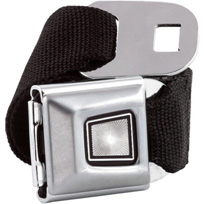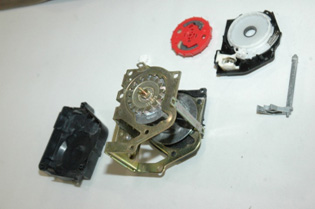PRACTICE AREAS
PRODUCTS LIABILITYS - SEAT BELTS

|
Statistics tell us that in the modern crash environment, a very large percentage of occupants are belted. Various studies put the number at approximately 90%. Injuries to belted occupants arise mostly from three types of defects. A. UNLATCHINGSeat belt buckles have been proven to inertially unlatch. Automobile manufacturers have been aware since May of 1966 of the potential for the center button seat belt to come open or release during impact. Nevertheless, the automobile manufacturers have claimed that such a release does not happen in real world accidents. But inertia acceleration forces on the buckle housing and spring cause a release to occur as the pawl is depressed, releasing the latch. |

B. RETRACTOR FAILURES
Aside from the seat belt buckles coming unlatched in a crash, many seat belt retractors fail to adequately perform in crashes because the retractors fail to lock or stay locked during the accidents. Examples include the following:
1. Pendulum-Type RetractorsCentrifugal forces acting on the pendulum in the retractors cause the retractor to lock. Normally this pendulum hangs straight down and the belts move in and out freely. In an accident, the forces of inertia cause the pendulum to move and contact the lock bar, which locks a gear on the retractor that is supposed to prevent the movement of the seat belt. However, during rollovers, the centrifugal force exerted on the retractor due to spinning about the longitudinal axis can be greater than the gravity force and thus cause the pendulum and locking bar to pull away from the gear, allowing the seat belt to unravel. A solution to this problem would be to add the inertia locking reel to the belt system or a web-grabbing device and/or pretensioner.
2. Skip-LockOther retractors rely on plastic wheels or faulty mechanisms that lock and then allow the locking pawl to “skip” over several of the cogs in the gear of the retractor. Evidence of skip-lock would be revealed on the teeth or gears of the retractor.
3. Spool-OutCertain retractors, particularly those without web grabbers, are susceptible to spool-out. In simple terms, spool-out normally occurs where there’s too much webbing on the retractor that allows an excess amount of seat belt excursion after the seat belt retractor is locked. The slack created by a spool-out allows unnecessary movement of the occupant. As a result, the occupant’s head can strike the roof or pillars in an unsafe manner.
For more information: Contact Us

